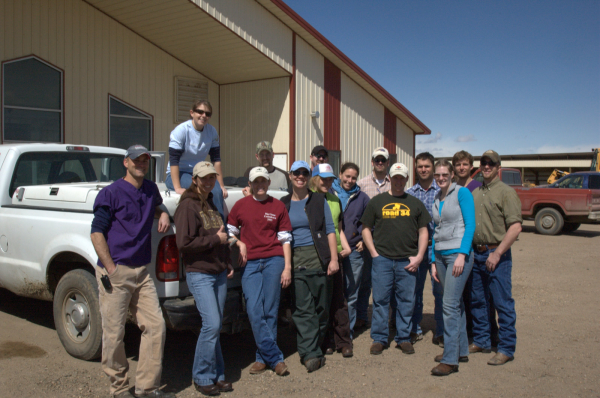By: Jill Colloton, DVM Bovine Services, LLC
Pregnancy vs. Open Diagnosis
Accomplished ultrasonographers can determine pregnant versus open status with excellent accuracy as early as 27 days in cows and 26 days in heifers (Romano, 2006)
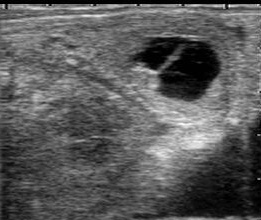
27 Day Bovine Pregnancy
Ovarian Diagnosis
Palpation is less than 80% accurate for accurate diagnosis of normal ovarian structures. For diagnosis of cystic ovarian conditions palpation is only from 10% (Stevenson) to 50% (Lievaart) accurate. Ultrasound can approach 100% for identification of a corpus luteum. Correct diagnosis of ovarian structures is particularly important to maximize the effectiveness of synchronization programs.
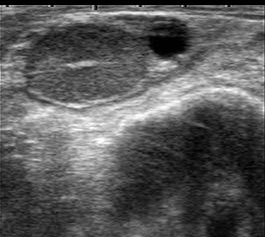 Mature Follicle with CL
Mature Follicle with CL
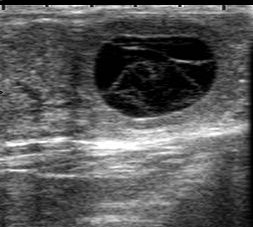
Fluid filled CL. The thin wall would make it easy to misdiagnose this structure as a follicular cyst on palpatiation
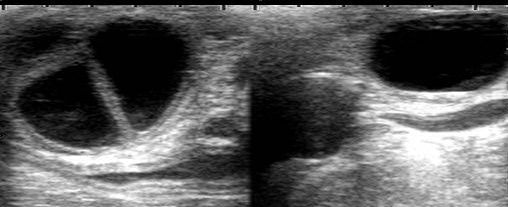
Note the very thin outer walls and irregular shapes of these follicular cysts
Uterine Pathology
Ultrasound can assess the quality of intra-uterine fluid - purulence vs. mucous. It can also detect very small amounts of fluid that would not be palpable in subclinical metritis cases. In clinical cases it can determine if the discharge is due to metriris or vaginitis.
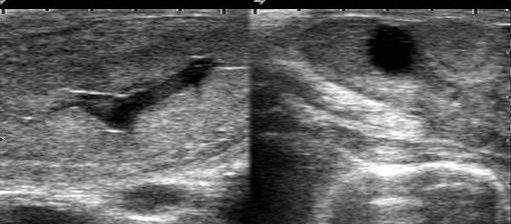
Note the clear mucous in the lumen of the uterus on the left side of the screen and the 18mm follicle on the right side.
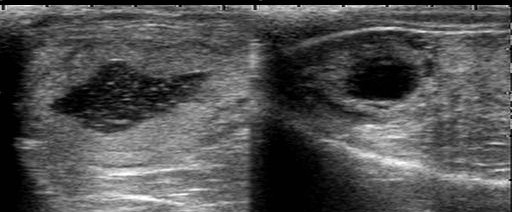
Note the flocculence representing purulent material in the lumen of the uterus. Although in heat this cow would clearly not be fertile. On palpation this uterus would feel identical to the previous image of a normal uterus.
Fetal Viability
Fetal remnants and placental membranes can remain in utero weeks to months after fetal death (Ginther), creating a false positive diagnosis of pregnancy by palpation. Lack of fetal viability is readily apparent with ultrasonography.
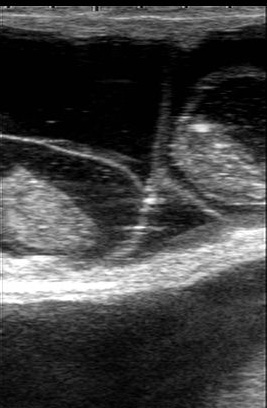 In this 54 day twin pregnancy the amount of fluid and the size of the amnions is perfectly normal. However, the flocculence in the amniotic fluid, the lack of heartbeats, and the lack of form in the fetuses confirm fetal death.
In this 54 day twin pregnancy the amount of fluid and the size of the amnions is perfectly normal. However, the flocculence in the amniotic fluid, the lack of heartbeats, and the lack of form in the fetuses confirm fetal death.
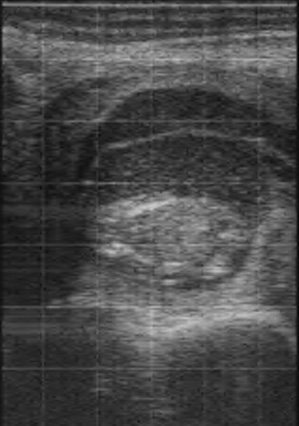 Note the extreme flocculence in the pregnancy fluids and the degradation of the dead fetus. On palpation there would still be cardinal signs of pregnancy, including a membrane slip.
Note the extreme flocculence in the pregnancy fluids and the degradation of the dead fetus. On palpation there would still be cardinal signs of pregnancy, including a membrane slip.
Twin Diagnosis
Skilled ultrasonographers can diagnose more than 90% of twin cases if cows are examined before 100 days in gestation. Diagnosis of twin pregnancies in the same uterine horn is particularly important due to the high rate of embryonic and fetal loss for unilateral twins (Lopez-Gatius)
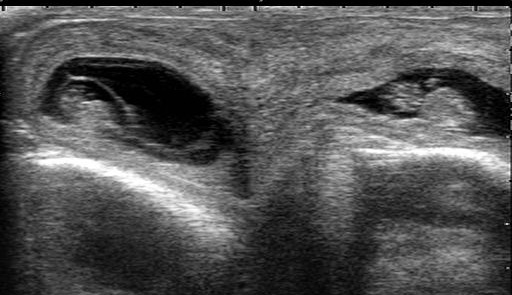
Normal bilateral twins at 39 days.
Fetal Sexing
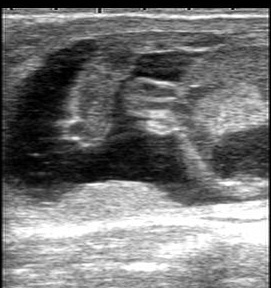
Male fetus at 70 days. Note the umbilicus at 9:00 and the bright white male genital tubercle just below it at the junction of the umbilicus and body wall.
Knowing fetal gender is important to producers for cull decisions, marketing decisions, peripartum monitoring, and calf management decisions.
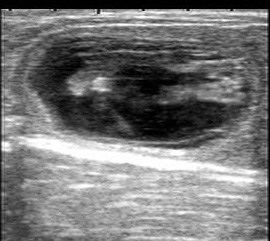
Femal fetus at 65 days. The perineal area with a cross section of the tail and the bi-lobed female gential tubercle is on the left of the screen. The tarsi and cloven hooves are well-delineated on the right of the screen.
Fetal Anomalies
Though rare, fetal anomalies such as schistosomus reflexus, multiple heads, fetal ascites, and extreme arthrogryposis are devastating if allowed to go to term. Ultrasound, particularly at the stage for fetal sexing, can often identify these anomalies much earlier.
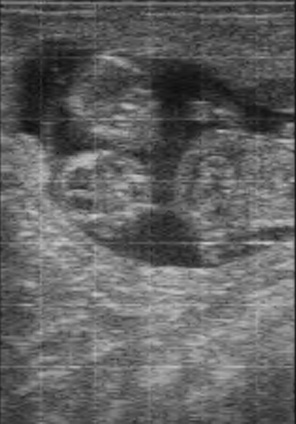 Two-headed fetus. Fetal anomalies are most often noticed during fetal sexing examinations.
Two-headed fetus. Fetal anomalies are most often noticed during fetal sexing examinations.
For more bovine ultrasound imagesand cine loop videos by Dr. Colloton and other respected bovine ultrasound practitioner please visit www.eimedical.com. For more information on durable, water- resistant, portable cattle ultrasound equipment the Ibex Pro and Ibex Lite or call toll free 1.866.365.6596 * 970.669.1793










